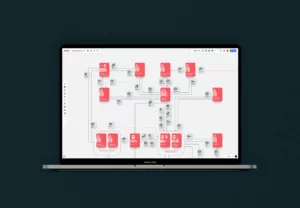Bringing new healthcare innovations to market is no easy task. A growing ecosystem – increasingly incorporating digital innovators, social entrepreneurs and different payer groups – is changing the way pharmaceutical companies are discovering, developing and distributing therapies. More and more organizations are shifting from a self-centred, business oriented perspective where they ask ‘How can I create more value for the patient/HCP’ towards a more collective perspective where they ask ‘How can we create more value for the patient/HCP?’ and ‘How can we optizmize our ecosystem?’.
Ecosystems are inherently complex and interconnected and this complexity is further compounded as the whole healthcare system is scrambling to respond to the COVID-19 outbreak while trying to assess mid- to long-term consequences on their operations and the ecosystem as a whole.

An ecosystem map provides business stakeholders with a holistic overview of the different stakeholders and their internal relationships that together make up the ecosystem in which they aim to operate. Depending on the use case you will scope your stakeholder map differently but generally having an ecosystem map offers three important benefits:
1. Alignment & common language
Working on the launch of a new product and service in healthcare more often than not implies trying to navigate multiple healthcare systems. Co-creating an ecosystem map with the team is a great way to make sure everyone is on the same page and understands the environment in which they aim to operate.
2. Spotting partnership opportunities
Mapping out an ecosystem including all the different types of relationships between stakeholders is a great way to identify potential partnerships that could help you capture data, increase access, build infrastructure or develop new innovative value propositions.
3. Understanding patient/HCP perspective
Developing patient- and/or HCP-centric solutions. Putting them at the center of an ecosystem map clarifies all the different stakeholders they need to deal with and more often than not it will help you define a simpler solution that takes away an interaction instead of adding an additional one.
Mapping an entire ecosystem and defining your ecosystem strategy might seem like a daunting task but you don’t need a 3 month long strategy track. Simply gather some people from your team from different perspectives in a virtual room and use our free Business Model Kit tool on Miro to build your first ecosystem map. If you need a hand to get started have a look at our ecosystem mapping sprint.
Want to map and shape your healthcare ecosystem?
In less than a week we map your current ecosystem and co-create a strategy to improve upon gaps and opportunities within your current business ecosystem.


